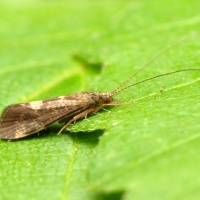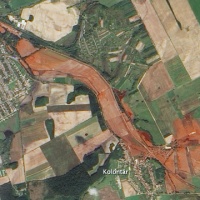Chemical pollution limits the ecological status of European freshwaters

Chemical pollution poses a significant threat to the health of freshwater ecosystems, both in Europe and across the world. A major 2014 study suggested that chemical pollution has acute, potentially lethal, impacts on freshwater organisms at more than one in ten monitored sites across Europe; and long-term negative impacts at almost half of these sites.
The challenge is an unenviable one for water managers: how to monitor and manage more than 140,000 different toxic substances, each with unique properties and impacts? And in addition, how to understand and mitigate the interactions and impacts of chemical ‘cocktail’ mixtures on the aquatic environment?
Disciplinary differences in monitoring chemical pollution
At present, aquatic chemical pollution is monitored in two main ways. Applied ecologists generally carry out field observations in a process of ‘gradual assessment’, which allows them to assess ecological impacts on a five-point scale ranging from major to minor. On the other hand, ecotoxicologists base their assessments on laboratory experiments, and provide a binary diagnosis of water quality: either a toxic chemical (or mixture) is present at an acceptable level; or it is too high, and should be managed.
These two approaches present a dilemma for water managers: how to combine and act on the different diagnoses they receive? A new study published this week outlines how applied ecologists and ecotoxicologists can better synthesise their results to provide practical information for water managers seeking to mitigate the effects of chemical pollution.
Synthesising applied ecology and ecotoxicology approaches
The study, a collaboration by an interdisciplinary group of European researchers, proposes five ecotoxicological classes that can be linked to the five degrees of ecological impacts. Lead author Leo Posthuma from the Dutch National Institute for Public Health and the Environment explains,
“In this study, we bridged disciplinary differences by building an integrative data set for European surface waters, and analysing whether and in how far chemical pollution (from the applied ecotoxicologists) acts as a limiting factor to ecological status (from the applied ecologists). We found that mixtures matter: increased exposure to mixtures of 24 priority substances of Europe-wide concern implies increased limitations to maintain or reach good ecological status.”
“Applied ecologists and applied ecotoxicologists usually give separate information to water quality managers,” Posthuma outlines. “This is because applied ecology is built on field observations, whereas applied ecotoxicology is based on laboratory toxicity tests, as making chemical exposure gradients for over 350,000 substances in trade across the globe would be impracticable and unethical. Water quality managers are thus often confronted with two independent types of management advice: views from ecologists, and views from ecotoxicologists. That is not an optimal situation, especially since the ‘indicator systems’ of each discipline are vastly dissimilar,” he says.

Providing comprehensive and practial advice to water managers
Writing in Nature: Scientific Reports, the research team, drawn from RIVM, WEnR, Deltares and other European partners, outline how current water quality assessments might show the presence of a chemical pollution problem, but don’t diagnose its magnitude. They outline ways of evaluating the dynamics, geographies and impacts of chemical mixtures in the aquatic environment to help identify ‘hot spots’ of chemical pollution requiring management.
Crucially, they describe the relationships between chemical pollution and the ecological status of water bodies. This provides important information for water management, as Posthuma explains, “Our collaboration is important because – if successful – we can for the first time provide water quality protection, assessment and management experts with unified and comprehensive types of management information.
“Our findings are important in two ways,” Posthuma continues. “First, the outcomes show that chemical mixture exposures should not be neglected as key cause of reduced ecological status. That is: forgetting mixtures in diagnosing reduced water quality may result in ‘ill-defined measures’ which will not succeed, as chemical pollution is the hidden weakest link, limiting recovery.
“Second, the outcomes show that it is feasible to bridge the classical gap between applied ecology and ecotoxicology in such a way that the assessment of chemical pollution is now aligned with the ‘thinking’ of applied ecologists,” Posthuma says. “The approach we describe has the potential to be used worldwide.”
+++















Comments are closed.